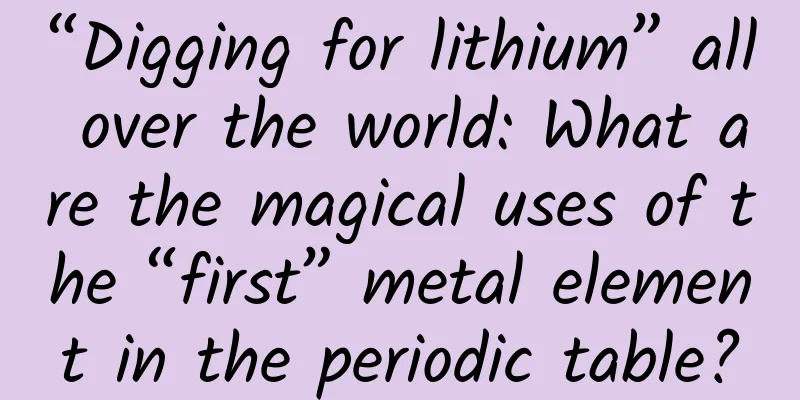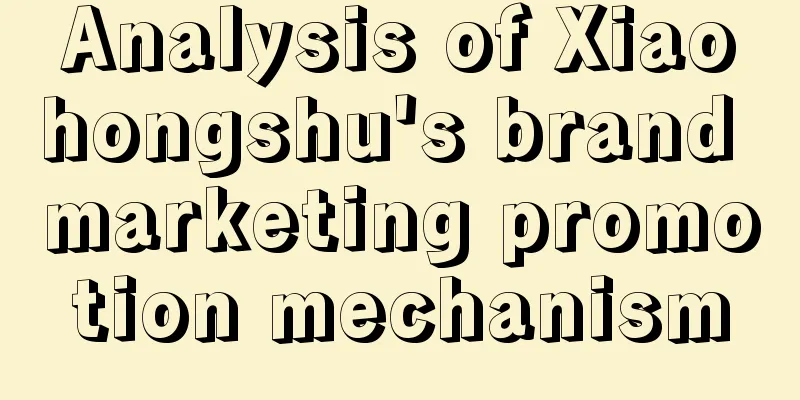“Digging for lithium” all over the world: What are the magical uses of the “first” metal element in the periodic table?

|
In January 2024, the media learned from the Ministry of Natural Resources that geological survey workers in China have discovered nearly one million tons of lithium resources in Yajiang, Sichuan. This is the largest pegmatite-type single lithium mine discovered in Asia so far. So, what is a pegmatite-type single lithium mine? What is the significance of its discovery? Let's start with this "lithium". 01 This "lithium" has a small file Lithium is a metal element, located in the second period IA group of the periodic table. It is also the first metal element in the chemical periodic table. Its element symbol is Li, its atomic number is 3, and its atomic weight is 6.941. Lithium is a silvery white, soft metal with the lowest density . However, lithium is rare in nature. Its melting point is 181 °C, boiling point is 1342 °C, specific heat capacity is 3.58 kJ/kg·K, and it can react with water. Lithium (copyrighted image from the gallery, reprinting may cause copyright disputes) Generally, IA group alkali metals have very obvious metallic element characteristics, such as being very easy to form +1 valent cations, extremely low electronegativity and first ionization energy , etc. In addition, lithium atoms can easily polarize other molecules or ions, but they themselves are not easily polarized, which affects the stability of lithium atoms and their compounds. 02 There is evidence for lithium: the distribution of lithium mineral resources Lithium is widely distributed in nature, with an abundance of 20 ppm in the earth's crust. It mainly comes from igneous rocks and sedimentary rocks , among which granite has a higher content , with an average content of 40 ppm. At present, there are more than 150 lithium minerals and lithium-containing ores found in nature, among which the more common ones are spodumene, lepidolite, pyroxenite, petalite and ferrolithium mica . Spodumene fluoresces under ultraviolet light (copyright image from the gallery, reprinting may cause copyright disputes) Among the many types of lithium mines, pegmatite-type lithium mines are very important, especially granite pegmatite-type lithium mines , which are the current research hotspot of international mineral deposits. Granite pegmatites are usually easy to enrich rare elements such as lithium, rubidium, cesium, beryllium, gallium, tin, tantalum, niobium , etc. The spatial distribution of pegmatite-type lithium mines in China is relatively concentrated, mainly distributed in the West Kunlun, Songpan-Ganzi, Altai and other regions. Aerial view of a lithium mine (copyright image from the library, reprinting may cause copyright disputes) Data shows that among the world's proven lithium resources, the reserves of five countries , namely Chile, Australia, Argentina, China and the United States, account for 85.73%. Among them, China's lithium resources account for 13.7% of the world's total in terms of basic reserves and 25.7% of the world's total in terms of reserves. At present, China's proven lithium resources are mainly distributed in Sichuan, Jiangxi, Hunan, Guizhou, Henan and Inner Mongolia . Among them, Sichuan's lithium reserves account for 60.56% of the country's lithium resources , followed by Jiangxi (14.41%) and Hunan (11.41%) . 03 “Lithium mining” all over the world: the importance of lithium and its wide application Lithium is widely used in batteries, ceramics, glass, lubricants, refrigerants, nuclear industry, optoelectronics and other industries. With the continuous development of industrial products such as computers, digital cameras, mobile phones, mobile power tools, mobile power supplies, new energy vehicles, modern chemical industry, nuclear power, photovoltaics, etc., lithium has risen to become one of the strategic metals of the new era that the country attaches the most importance to . At present, the battery industry is the largest consumer of lithium, and the glass and ceramic industries have become the second largest consumer of lithium . ▼Battery manufacturing industry Lithium batteries are very popular due to their high energy density, light weight, small size, long life, good performance and no pollution . In recent years, the proportion of lithium batteries in the battery field has increased from 7% in 1997 to 35% in 2013. They are widely used in notebook computers, mobile phones, digital cameras, small electronic equipment, aerospace, electromechanical and military communications . (Copyrighted images from the gallery, reprinting may lead to copyright disputes) ▼Glass manufacturing industry Lithium concentrate or lithium compounds mainly play a role in fluxing in the glass melting process , which can reduce the temperature of glass melting and the viscosity of the melt, simplify the production process, reduce energy consumption, extend the life of the furnace, increase production, improve operating conditions, and reduce pollution. Adding lithium compounds to glass can also reduce the coefficient of thermal expansion of glass, improve the smoothness of glass , and improve the strength, ductility, corrosion resistance and thermal shock resistance of glass products. ▼Ceramic manufacturing industry Ceramics with a small amount of spodumene have lower sintering temperatures and shorter sintering times . The ceramic products made from them have better fluidity and adhesion, and are more heat-resistant, acid-resistant, alkali-resistant, and wear-resistant. Currently, ceramics containing spodumene are widely used in microwave oven trays, induction cooker panels, turbine blades, spark plugs, and other products. ▼ Grease manufacturing industry Lithium-based grease has the advantages of anti-oxidation, pressure resistance, and good lubrication performance . The viscosity of the grease changes little in the range of -60~300 ℃. Therefore, lithium-based grease is widely used in aircraft, tanks, trains, auto parts, metallurgy, and petrochemical industries. ▼Metallurgical industry Lithium alloy is an important component of light alloy, ultra-light alloy, wear-resistant alloy and other non-ferrous alloys in the aviation manufacturing industry. Adding lithium to the alloy can greatly improve the alloy properties. For example, lithium-magnesium alloy is a high-strength light alloy that not only has good thermal conductivity, electrical conductivity, and ductility , but also has corrosion resistance, wear resistance, good impact resistance, and resistance to high-speed particle penetration . It is known as "tomorrow's aerospace alloy" and is widely used in aerospace, national defense, and military industries. The domestically produced large passenger aircraft C919 uses aluminum-lithium alloy on a large scale for the first time (Source: Xinhua News Agency) Lithium is also a good degassing agent . When lithium is added to molten metals or alloys, it reacts with gases such as hydrogen, oxygen, sulfur, and nitrogen in the metals or alloys to produce compounds with low density and low melting point. This process not only removes gases and makes the metal denser, but also eliminates bubbles and other defects in the metal, thereby improving the metal's grain structure and improving the metal's mechanical properties. In addition: Lithium metal has the properties of large heat capacity, wide liquid phase temperature range, high thermal conductivity, low viscosity and low density , and is used as a coolant in nuclear fusion or nuclear fission reactors; Lithium bromide is a highly efficient water vapor absorbent and air humidity regulator, and is widely used in air conditioning, dehumidification, refrigeration and air purification systems; Lithium salt fertilizer can prevent tomato rot and wheat rust. Adding lithium salt to aluminum electrolytic cells can improve the fluidity of molten salt, reduce the degree of electrolysis, and save electricity significantly. n-Butyl lithium is also used as an initiator for the synthesis of styrene and butadiene alcohol, and is widely used in high- and low-temperature resistant rubber sealing materials and rubber tires. Adding butyl lithium to rubber tires can increase their service life by more than 4 times. Lithium is truly a "panacea". The lithium mine discovered this time is undoubtedly an important supplement to my country's strategic metal resources. I believe that with rational use in the future, this resource will surely promote many industries in my country to a higher level. Author: Xu Chang, PhD in Structural Geology, Sun Yat-sen University Reviewer: Dong Hanwen, Associate Researcher, Institute of Geology, Chinese Academy of Geological Sciences Produced by: Science Popularization China Produced by: China Science and Technology Press Co., Ltd., China Science and Technology Publishing House (Beijing) Digital Media Co., Ltd. |
>>: Is oil derived from plants or animals?
Recommend
If you see these at the beach in summer, run away! Don't touch them with your hands
Due to the high temperatures in recent days, visi...
2021 fully automated on-hook project, brainless on-hook single number earns 100+ per day
Project Introduction: 1. A computer [configuratio...
Getting Started with SEO, How Do Newbies Learn SEO?
SEO website optimization, this technology has a h...
Xu Guanhua: Zhou Guangzhao's scientific light will always shine
This article was published in the Bulletin of the...
Drinking coffee before shopping could cost you half the money
In the past, I often heard people say, "It&#...
How powerful is “Deep Sea One”?
Editor's Note In the past 2021, all walks of ...
The first set of photography system courses for clothing people, a compulsory course for mobile clothing photography, just look at Brother Chao to learn clothing photography
The first set of photography system courses for c...
Apple iOS 15.1 Beta 3 has restored the ability to disable keyboard notifications for Apple TV and Apple Watch separately
[[428304]] According to 9to5 Mac, when the offici...
How much does it cost to pay for social security in Guangzhou? 2020 Guangzhou Self-funded Social Security Fees
There are many people from other provinces workin...
Where are the future opportunities in China's social field?
Recently, advertisements for a social APP have be...
Is there any bottled water software that can be used on mini programs? Can bottled water be ordered through the mini program?
Is there any bottled water software that can be u...
What happened to the Changchun epidemic in 2022? When will the unblocking end? Attached the latest news
Among the local epidemics in Jilin Province recent...
This epidemic forces people to give up delicious food (not stomach problems)
Do you have friends like this around you? Are the...
Chifeng SEO training: the difference between static, dynamic and pseudo-static pages
When companies are preparing to build a website, ...
Where will the future moon base be built? In a volcanic cave →
In science fiction movies, we often see moon base...









